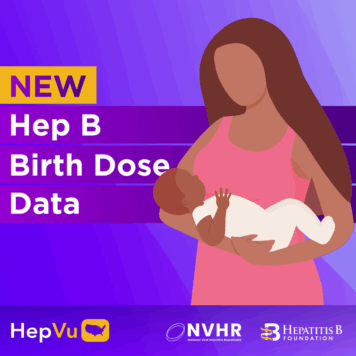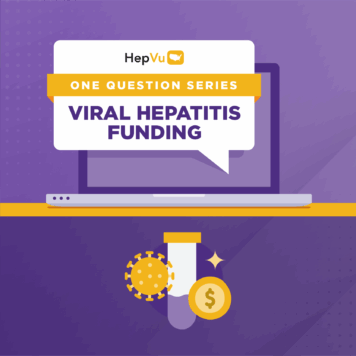Guillermo Chacón is President at The Latino Commission on AIDS (Commission)
Q: You have helped expand the Commission and its capabilities to improve the health equity of Hispanic/Latinx people. Which programs have made the biggest impact?
I’d like to highlight four programs that have had a big impact:
- The Latino Religious Leadership Program, launched in the late 90s, began with the idea to target community congregations to tailor health promotion and stigma reduction programs, church-by-church. The project has been a tremendous success, to not only increase screening and raise awareness about various diseases but especially when it comes to HIV and hepatitis.
- We have also seen a positive impact on the work being done to engage LGBTQ Latinx at our Oasis Wellness Center in New York City. I believe it has been successful because we engage people in a non-traditional way; it’s a separate center outside the main headquarters of the Commission. It has also been a success because we focus our energy on engaging young, gay, bisexual Latino men, Transgender individuals and building a trusting relationship with them.
- In 2006, we launched Latinos in the South. It is an amazing program that brings visibility to a very invisible community and an invisible This program specifically focuses on the South, promoting leadership development and networks of collaborations. We aim to address the need of communities, which are heavily affected by stigma, HIV, STIs, and viral hepatitis.
- Finally, our Capacity Building Assistance Program has allowed us to expand our efforts and specifically strengthen community-based organizations in many critical areas. One priority is to enhance organizational development to grow in capacity for prevention, access to health and wellness for all communities.
Q: The Commission plays a critical role in addressing and helping to prevent HIV/AIDS, viral hepatitis and sexually transmitted infections. As part of this, how did National Hispanic Hepatitis Awareness Day (NHHAD) begin? How has it evolved over the years?
In 2010, the Commission began to work with our parent nonprofit, Hispanic Health Network, to build this awareness day. We realized it was important to address epidemics besides HIV in our communities, and in 2012, we launched the first-ever NHHAD.
Unfortunately, New York – where the Commission is headquartered – is an epicenter for both HIV and Hepatitis C, and as a result, there have been many ways for the awareness day to evolve. We have built community engagement and mobilization and voiced discontent with the way things currently are in New York health services. We have had an impact at the city, state, and international levels. I am particularly proud of the Commission’s involvement with the statewide plan for the elimination of Hepatitis C in New York State by Governor Andrew Cuomo, which is the first plan of its kind in the U.S.
I am also proud to share that Luis Scaccabarrozzi, Vice President and Director of Health Policy and Advocacy at the Commission, who is the only Hispanic in the governor’s statewide task force for New York, is working with the task force to develop a blueprint for the elimination of Hepatitis by June 2019. From there, hopefully, the governor will adopt the plan and we will transition into a phase of heavy implementation in the fall of 2019 and beyond.
Q: As noted by the Centers for Disease Control and Prevention (CDC), Hepatitis C is progressing faster among Hispanic/Latinx people than in non-Hispanic whites. What does that mean for the Hispanic/Latinx community and informing the public health response?
It is incredibly important to have a public health response that targets Hispanic/Latinx people at risk for Hepatitis C because the population is growing so rapidly. Right now, Hispanic/Latinx people make up nearly 18 percent of the U.S. population, a figure that continues to rise. Additionally, health indicators show that we need a public health response specific to this community. We must make it a priority for the Commission and Hispanic Health Network to better communicate this need to health departments at the state, city, and campus levels. It is critical to make them aware of who we are, who their community members are, and what they need.
In addition to raising awareness, public health systems must understand the cultural reality, dynamic, norms, traditions, and language barriers in working with the Hispanic/Latinx community. There’s plenty of research that highlights that Hispanics/Latinx feel more comfortable receiving health-related information in Spanish. The fact that there are little to no public health customized awareness campaigns for the Hispanic community, especially about screening and Hepatitis C remains a challenge. There is a cure, but people don’t know about it. It is a complex issue to address these systematic barriers, but by doing so we will allow for public health efforts to effectively reach the Hispanic community.
Q: Have the lack of Hepatitis C data and the need for more surveillance been barriers to improving the health of Hispanic/Latinx communities? Are there other barriers that are important?
I believe the lack of data and the need for more surveillance are the biggest structural barriers we face. We need better surveillance and data that will inform and promote research initiatives to allow for a deeper understanding of hepatitis in Hispanic communities. When you examine deaths related to Hepatitis C, many of those people did not even know they were infected. It’s no coincidence that chronic liver disease is the leading cause of death for the Hispanic/Latinx population in the U.S. This is in part because people are not being educated; we must better guide public health officials at the local, state, and federal levels to prevent these unnecessary deaths.
Additionally, the National Institute of Health (NIH) must begin new and improve existing research in this area. More NIH research will help educate the public and Congress, which appropriates resources for necessary health programs. There has been a cure for a long time, but there are still an estimated 2.3 million or more people living with Hepatitis C in the U.S. That’s an epidemic double the size of HIV, but a lack of data, research, and appropriation of resources creates barriers that we must overcome in years ahead.
Lastly, in order to overcome these barriers, we should focus on where our health practitioners begin their careers. We need to engage all schools of medicine and public health in the U.S. because that is the backbone of our health system – we must advocate for students to be aware of the health disparity for the Hispanic community. Furthermore, we need more physicians to work in the infectious disease field because viral hepatitis has a global impact. There are more than 100 million people living with viral hepatitis worldwide, and having a global outlook would be a big step towards addressing hepatitis in Hispanic communities domestically as well.
Q: With NHHAD and Hepatitis Awareness Month on the horizon, what is the main message you’d like to share with the Hispanic/Latinx community and viral hepatitis advocates?
We need to keep talking about hepatitis A, B, and C among the Hispanic/Latinx community. With a priority on hepatitis C and telling people to be screened, because there is a cure. For those impacted by Hepatitis C, become aware and get linked to care. I also want advocates to raise awareness about the importance of vaccinating for Hepatitis A and B, especially considering recent outbreaks in areas across the country.
There is much work to be done to address the epidemic by city, county, state, and US territory. Awareness can be raised by talking with community members, engaging media and elected officials. Buy in at the federal level is fundamental to obtaining necessary funding and research, and we continue to push forward in this area, but there is still work to be done in each community – not only during Hepatitis Awareness Month and on NHHAD, but every day. We want a strong nation, but more importantly a healthy nation.




